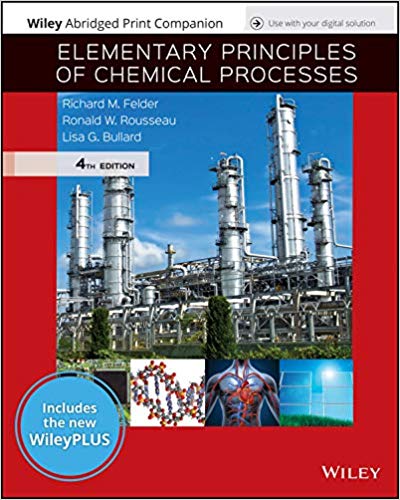Acetylene is produced by pyrolyzingdecomposing at high temperaturenatural gas (predominantly methane): 2CH4 (g) C2H2 (g) + 3H2 (g) The heat required to sustain this
Acetylene is produced by pyrolyzing—decomposing at high temperature—natural gas (predominantly methane): 2CH4 (g) → C2H2 (g) + 3H2 (g) The heat required to sustain this endothermic reaction is provided by feeding oxygen to the reactor and burning a portion of the methane to form primarily CO and some CO2. A stream of natural gas, which for the purposes of this problem may be considered pure methane, and a stream containing 96.0 mole% oxygen and the balance nitrogen are each preheated from 25oC to 650oC. The streams are combined and fed into an adiabatic converter, in which most of the methane and all of the oxygen are consumed, and the product gas is rapidly quenched to 38oC as soon as it emerges from the converter. The residence time in the converter is less than 0.01 second, low enough to prevent most but not all of the methane from decomposing to form hydrogen and solid carbon particles (soot). Of the carbon in the feed, 5.67% emerges as soot. The cooled effluent passes through a carbon filter in which the soot is removed. The clean gas is then compressed and fed to an absorption column, where it is contacted with a recycled liquid solvent, dimethylformamide, or DMF (MW 73.09). The off-gas leaving the absorber contains all of the hydrogen and nitrogen, 98.8% of the CO, and 95% of the methane in the gas fed to the column. The “lean” solvent fed to the absorber is essentially pure DMF; the “rich” solvent leaving the column contains all of the water and CO2 and 99.4% of the acetylene in the gas feed. This solvent is analyzed and found to contain 1.55 mole% C2H2, 0.68% CO2, 0.055% CO, 0.055% CH4, 5.96% H2O, and 91.7% DMF. The rich solvent goes to a multiple-unit separation process from which three streams emerge. One—the product gas—contains 99.1 mole% C2H2 , 0.059% H2O, and the balance CO2; the second—the stripper offgas—contains methane, carbon monoxide, carbon dioxide, and water; and the third—the regenerated solvent —is the liquid DMF fed to the absorber. A simplified flow diagram of the process is given on the next page. A plant is designed to produce 5 metric tons/day of product gas. (a)Sketch a process flow chart of the (b)Analyze the system to give a sequence of equipment to be solved (c)The required flow rates in standard cubic meter per hour (SCMH) of the methane and oxygen feed streams. (d)The molar flow rates (kmol/h) and compositions of the gas feed to the absorber, the absorber offgas, and the stripper off-gas. (e)The DMF circulation rate (kmol/h). (f)The overall product yield (mol C2H2 in product gas/mol CH4 in the feed to the reactor), and the fraction that this quantity represents of its theoretical maximum value. (g)The total heating requirements (kW) for the methane and oxygen feed preheaters. (h)The temperature attained in the converter.
Step by Step Solution
3.45 Rating (155 Votes )
There are 3 Steps involved in it
Step: 1

See step-by-step solutions with expert insights and AI powered tools for academic success
Step: 2

Step: 3

Ace Your Homework with AI
Get the answers you need in no time with our AI-driven, step-by-step assistance
Get Started


